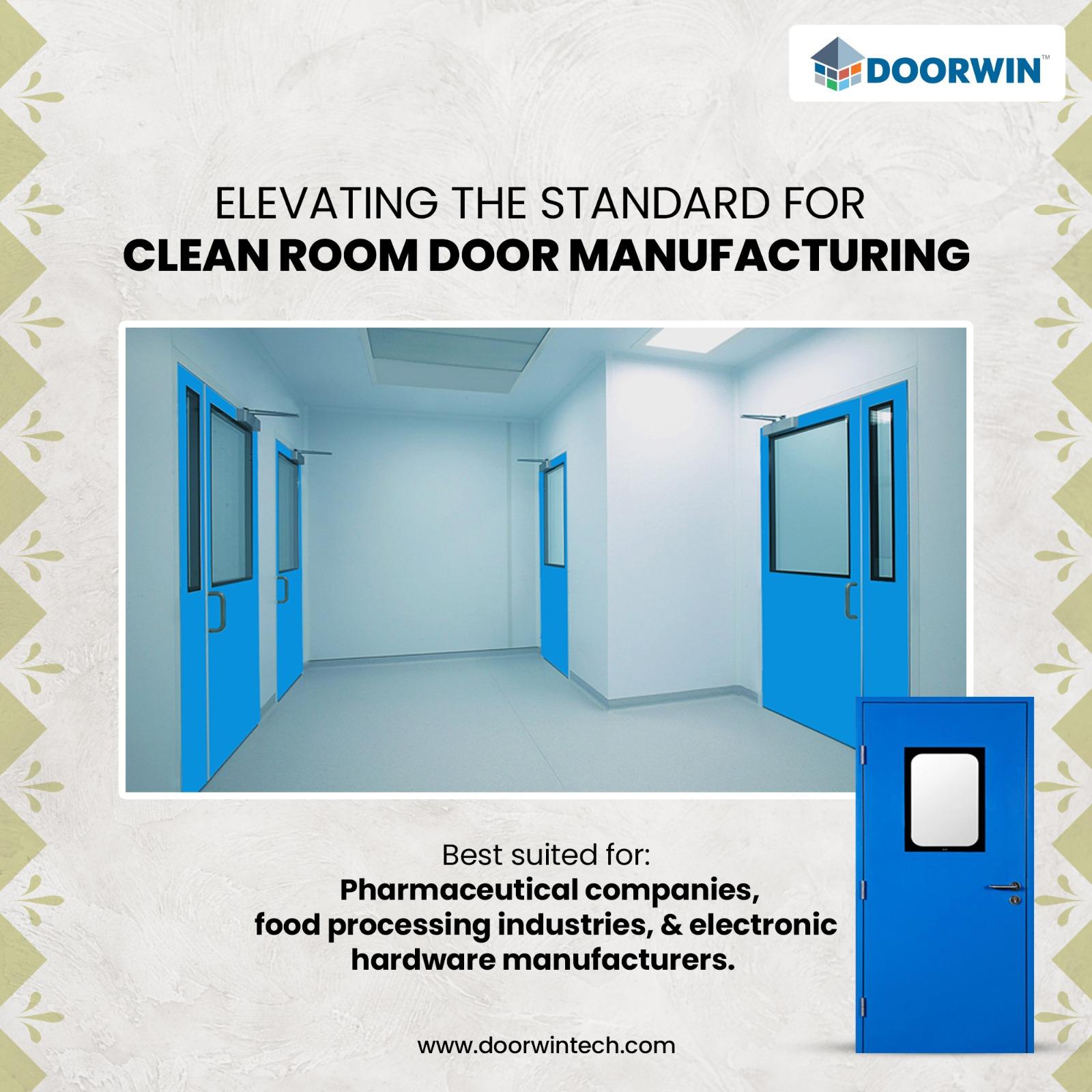Types of Clean Room Doors: Comparing Swing, Sliding, and Hermetic Seals

In a clean room, doors aren’t just about access—they’re about protecting the environment. A poorly chosen door can compromise contamination control, disrupt pressure balance, and even put compliance at risk. That’s why understanding the different types of clean room doors is essential when designing or upgrading a controlled space.
Below, we compare three of the most widely used options: swing doors, sliding doors, and hermetic seal doors.
Swing Clean Room Doors
Overview:
Swing doors are the most common type, opening on hinges like traditional doors.
Best For:
-
General-purpose clean rooms.
-
Spaces with moderate traffic.
-
Facilities where easy installation is a priority.
Advantages:
-
Cost-effective and straightforward to install.
-
Can be single-leaf or double-leaf.
-
Compatible with automatic closing systems.
Considerations:
-
Require clearance space to swing open.
-
Higher chance of air leakage compared to hermetic designs.
Sliding Clean Room Doors
Overview:
Sliding doors move horizontally on a track, making them space-efficient and smooth in operation.
Best For:
-
Narrow corridors or areas with limited space.
-
High-traffic clean rooms.
-
Facilities that prioritize automation.
Advantages:
-
Save space compared to swinging doors.
-
Reduce turbulence when opening/closing.
-
Can integrate with touchless or automated systems.
Considerations:
-
Require precise installation to maintain sealing.
-
May need more maintenance due to track mechanisms.
Hermetic Seal Clean Room Doors
Overview:
Hermetic doors are engineered with special gaskets or sealing systems that create an airtight barrier when closed.
Best For:
-
Pharmaceutical, biotech, and hospital environments.
-
Clean rooms that require strict contamination control.
-
Spaces where maintaining pressure differentials is critical.
Advantages:
-
Provide maximum air-tightness.
-
Meet stringent ISO and GMP requirements.
-
Resistant to harsh cleaning chemicals.
Considerations:
-
Typically higher cost compared to swing or sliding doors.
-
Require professional installation.
Quick Comparison Table
| Feature | Swing Doors | Sliding Doors | Hermetic Doors |
|---|---|---|---|
| Space Efficiency | Low | High | Moderate |
| Air-Tightness | Moderate | Good | Excellent |
| Automation Ready | Yes | Yes | Yes |
| Cost | Lower | Moderate | Higher |
| Best For | General use | Space-limited use | Strict clean rooms |
FAQs About Clean Room Door Types
Q: Which type of door is best for ISO-certified clean rooms?
A: Hermetic doors are often required because they provide the highest level of sealing and compliance.
Q: Can sliding doors be used in pharmaceutical clean rooms?
A: Yes, if they are designed with proper sealing systems and materials that withstand sterilization.
Q: Are swing doors still relevant in modern clean room design?
A: Absolutely—they remain a cost-effective choice for many facilities that don’t require extreme sealing.
Q: How do I decide between sliding and swing doors?
A: Consider space constraints, traffic levels, and the level of contamination control your facility requires.
Q: Can clean room doors be customized?
A: Yes. Sizes, materials, seals, and automation features can be tailored to your facility’s needs.
Conclusion
Choosing the right clean room door is about balancing space, cost, and compliance. Swing doors offer simplicity, sliding doors save space, and hermetic doors deliver the highest level of protection. The right choice depends on your industry standards and facility layout.
Doorwin Technologies provides a full range of clean room door solutions—swing, sliding, and hermetic—engineered to meet the strictest performance and regulatory demands. If your project requires reliable, high-quality doors, Doorwin is ready to deliver precision and durability.
- Art
- Causes
- Crafts
- Dance
- Drinks
- Film
- Fitness
- Food
- Giochi
- Gardening
- Health
- Home
- Literature
- Music
- Networking
- Altre informazioni
- Party
- Religion
- Shopping
- Sports
- Theater
- Wellness


